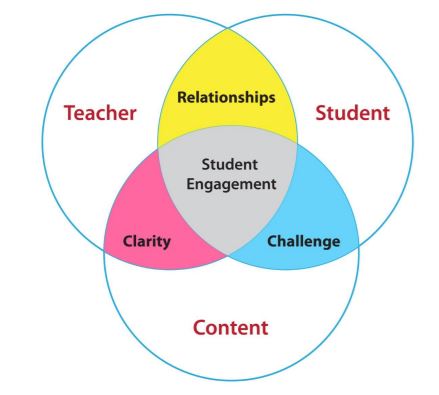Optimal student engagement: Where student, teacher and content meet
 – Siddharth Rajgarhia, Director, Delhi Public School – Nashik, Varanasi, Lava
– Siddharth Rajgarhia, Director, Delhi Public School – Nashik, Varanasi, Lava
The degree to which students think, feel, and actively engage in school plays a vital role in their academic and life success chances. As a result, student engagement in learning has become an essential consideration in research into learning environments and the design of instruction.
Every teacher wants engaged students, and no student wants to get bored in class. Yet, there seems to be a difference between the active engagement and participation of students and teachers. The classroom doesn’t seem to be teeming with discussion and purposeful activity centered on the day’s learning expectations.
Finding a rhythm where the students progress through relevant and challenging content—isn’t easy. But when the correct teaching technique is applied in the presence of an effective learning environment student engagement can hit through the roof . Understanding engagement—and actively pursuing it—can make all the difference between forging a real connection with students and having a classroom that’s simply going through the motions.
Student engagement in the classroom can be understood as emanating from the relationships between students and teachers, teacher levels of content and expertise, and how they see the content as relevant to their current interests and future goals.
For this, let’s examine the model incorporating engagement by design, where we can understand the interplay between the teachers, students and content in a classroom setting.

As shown in the graph, when the students and teachers connect (the overlap of the student and teacher circle), the relationship between the two is naturally strong. Thus, students’ relationships with teachers has crucial, positive, and long-lasting implications for students’ academic and social development. Students who have a close, positive and supportive relationship with their teachers will obviously attain higher levels of student engagement, achievement and success. The model depicts the importance of positive relationships and advocates that teachers should invest time and effort and systematically plan to build these as a part of their teaching practice.
Similarly, a teacher’s content knowledge can affect the effectiveness of the learning process. As seen in the diagram, the overlap between the content and teacher happens when the teacher has in-depth knowledge about a particular subject, can explain the topic effectively to the students, can effectively communicate the (learning objectives, her expectations from students) and through descriptive feedback connect with each student providing clarity.
The third overlap between the content and the student circle happens when the content is relevant for the students. The content pursued by the teacher should take the child from his/her previous knowledge structures and build newer bridges of understanding on top of that. A student is engaged when he/she feels challenged and as Vygotsky puts it that the learning is happening in the zone of proximal development. The kind of tasks that we are talking about here challenges the student to move out of his comfort zone and strive to do well. The task is within that sweet spot when it is not too difficult and not too easy and that is where we can have our students always wanting for more.
Thus, it can be seen that optimal student learning and engagement are only possible when all the three conditions are satisfied:
1. The teacher understands the content thoroughly and can effectively communicate with students having clarity.
2. The teacher knows the previous level of knowledge of the student and pursues tasks that challenge the students, enhancing the child’s thinking ability.
3. There is a positive and robust relationship between a student and a teacher, creating a positive environment.
Engagement is about creating an environment in which all students thrive. Dreaming about tomorrow must be in balance with taking action today. Many ingredients make a thriving learning environment, right from building relationships, effective communication to giving challenges to the students within their reach but outside of their comfort zones. The classroom environment has a significant impact on the way students learn. By creating a safe and inclusive environment and being consistent in delivering curricula, assessment and reflection, a teacher can provide an optimal learning environment. It would be correct to say that student engagement is directly proportional to effective learning and a classroom environment where the students are curious, interested, and inspired.
Reference: Fisher, D. Engagement by design (1st ed.).





 –
– 










Add comment